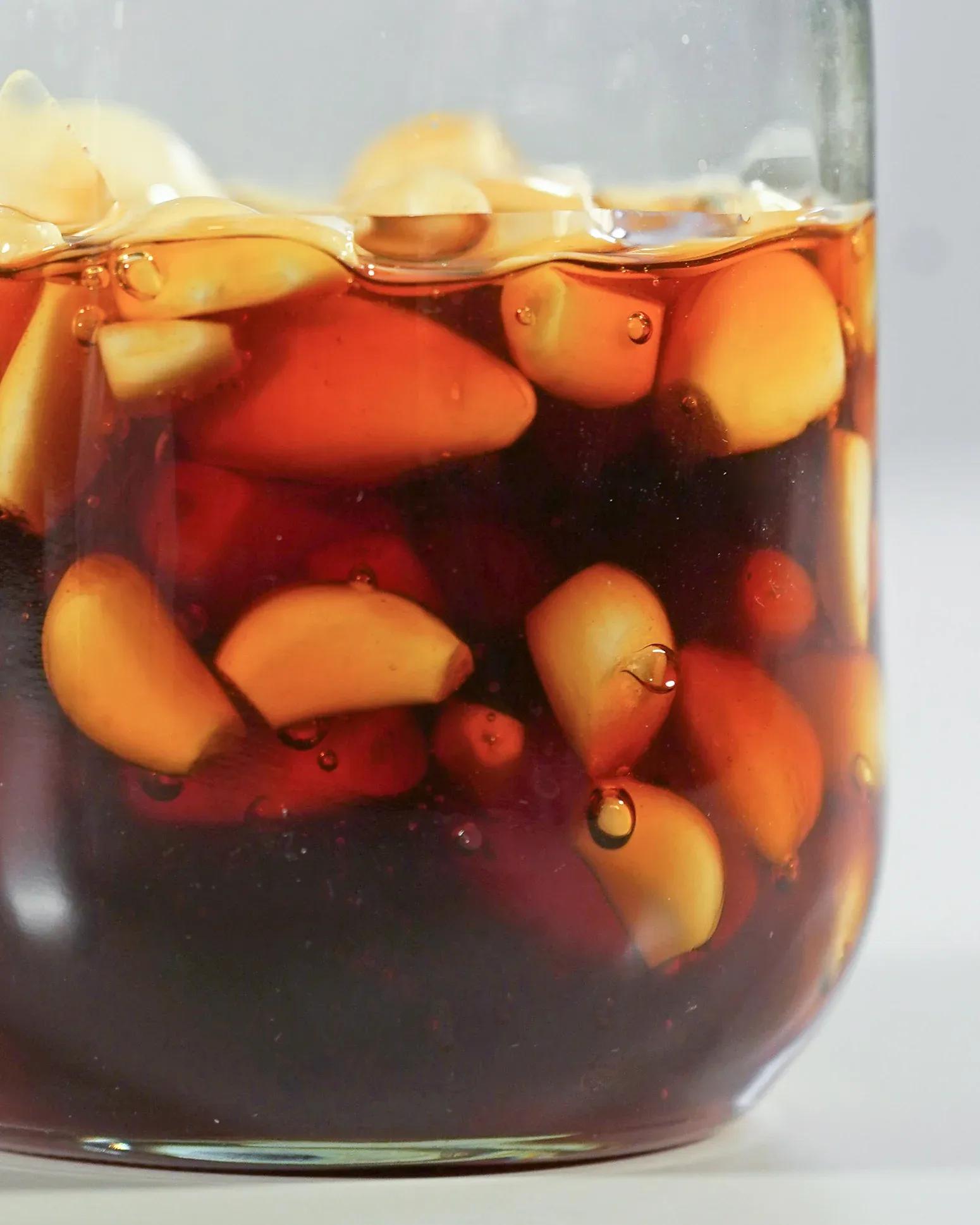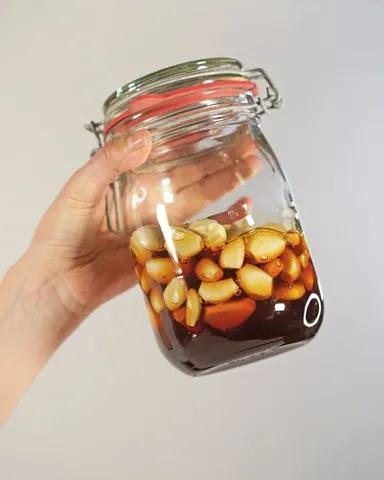Simple, at Home Fermentation!
Preserving food naturally without complicated chemical processes? Lots of probiotics and health-promoting benefits? We take a closer look at how fermentation works, what the advantages of fermented foods are and even how you can do it yourself at home!

Fermentation - Preserving food naturally
Food preservation without any complication processes or chemical intervention? This was extremely popular and helpful back when electricity didn't exist. Today, the trend has returned and many people are choosing to ferment foods themselves. What exactly is involved in the process, how you can do it yourself, and what the benefits of fermentation are, will be explained below.
Contents of this article:
- Fermentation – What is it exactly?
- What happens during fermentation?
- Are fermented foods healthy?
- Which foods are suitable for fermentation?
- Fermentation – How does it work?
- And now to the nitty gritty
- Fermentation Recipe #1: Manuel Jangajj
- Fermentation Recipe #2: Celery-Fennel-Lacto-Fermentation
Fermentation – What is it exactly?
The word fermentation originates from the latin word ‘Fermentum’ used to describe sourdough. It refers to nothing more than the transformation of an organic substance, which is produced with the help of bacteria, fungal or cell structures as well as through the addition of enzymes (ferments). The terms ‘fermentation’ and ‘fermenting’ will be used interchangeably in this article.
Did you know that you consume fermented products on an almost daily basis? Chocolate, cabbage, beer, cheese or yogurt contain basic products (e.g. cacao beans or milk) that were already fermented. Medicines also use the fermentation process for the production of antibiotics, insulin or vaccines. Fermentation is therefore a highly important process, used for the cultivation of a variety of products.
What happens during Fermentation?
Fermentation helps naturally conserve foods, how that happens, depends on the respective process. There are different types of fermentation which generally distinguish themselves between anaerobic (without oxygen) and aerobic (with oxygen) processes.
During a fermentation, bacteria, fungal and cell structures metabolise the carbohydrates in the respective fruit or vegetable. This process creates lactic acid, which makes the product acidic, and therefore extends its shelf life. The necessary bacteria for fermentation is found naturally in the fruit and vegetables, and do not need to be added. So these fermentations can be considered ‘wild’ or ‘spontaneous’. Other fermentation requires additional bacteria. This happens in the case of beer, kombucha or kefir production.
In total, there are 3 different types of fermentation. Lactic acid fermentation (e.g. pickled vegetables, yogurt, cheese), ethanol fermentation (e.g. beer, wine) and acetic acid fermentation (e.g. kombucha, apple cider vinegar). With the help of these processes, various foods and beverages are made probiotic! That sounds healthy…
Are fermented foods healthy?
The probiotic lactic acid which is created during the fermentation of cabbage, kefir or yoghurt promotes healthy gut bacteria and supports our metabolism and body with the absorption of their nutrients. Fermented foods also boast high amounts of vitamins, enzymes, minerals and trace elements. Fermentation also makes food more easily digestible. They are also lower in calories because the carbohydrates have been processed. All in all, a good win-win situation for both our gut and our immune system.
Which foods are suitable for fermentation?
The most popular and well known fermented foods are beer and cabbage (sauerkraut). In addition to these, there are a multitude of foods that can be fermented. Especially vegetables like root vegetables, carrots, peppers or onions. Fermentation is also suitable for the conservation of yoghurt, cheese and sourdough. Principally, you can ferment any kind of vegetable. But as we’ve mentioned, the final product will vary considerably to the original. That’s why we recommend selecting vegetables with a low water content. Foods like cucumber, zucchini or tomatoes have a higher risk of turning mushy.

Fermentation – How does it work?
To ferment vegetables, they have to be cut into small pieces, salted and kept in an airtight container. The natural fermentation process transforms the glucose into lactic acid, which creates an acidic environment. Undesirable bacteria are also destroyed, leaving behind only the health-promoting and probiotic bacteria.
To guarantee a first successful fermentation, you should pay attention to these tips:
- Inadequate hygiene can cause your fermented vegetables to spoil. Therefore, make sure to clean your vegetables as well as the fermentation container thoroughly before starting.
- Airtight containers are a necessity. As soon as air enters the container, the fermentation process is ruined and the vegetables will spoil.
- Lactic acid enjoy warm temperatures, but anything above 30°C is too hot. A room temperature of about 20°C is the ideal environment.
And now the nitty gritty:
As mentioned above, you can ferment any kind of vegetable really. For beginners, we recommend starting with cabbage, fennel or carrots.
In addition, you will need:
- A large air-tight container
- A knife or slicer
- Salt
- Water
- Your favourite seasoning or spices (optional)
Fermentation Recipe #1: Maneul Jangajj
Garlic fermented in honey: simple, delicious and high in probiotics. This fermentation requires a little patience, but is very worth the wait--a gift to your future self!
This mixture has incredible health benefits. Honey has anti-inflammatory and anti-bacterial properties and garlic is high in vitamin K, C and B-group vitamins and also contains calcium, potassium and magnesium. A delicious all-rounder and the perfect kitchen companion!
Ingredients:
-6 whole Garlic bulbs
-500ml raw (wild) honey
-1 Jar or airtight container (1L)
Step 1:
Sterilise jar:Place in a heated oven at 150°c for 2,5-3 hours
Step 2:
Peel garlic. It's important to remove any irregularities or dry spots on the garlic cloves. Working with smooth, clean food is imperative in fermentation, to avoid the cultivation of unwanted microorganisms.
Step 3:
Fill the jar with garlic and submerge in honey so that all the cloves are covered. For the first few days, the cloves will keep resurfacing to the top until they soak up enough honey to sink to the bottom of the jar.
Turn the jar over a few times every day to ensure that the garlic stays submerged in the honey. Once the garlic cloves absorb enough honey, they will sink to the bottom. The jar can be opened after 3 months. For the best and tastiest results, wait 7-12 months before opening. This is a very active fermentation, so don’t worry if it froths and bubbles-- that’s a sign it's actively fermenting! Not sure what you should pair your fermented garlic with? We have a couple of ideas (or bowls in fact): our hearty Ratatouille Romance or umami-filled Velvet Crunch are the perfect base that you can garnish with the fermented garlic. If you’d prefer a little snack, bake one of our ciabatta breads and simply top with some delicious garlic.

Fermentation – How does it work?
To ferment vegetables, they have to be cut into small pieces, salted and kept in an airtight container. The natural fermentation process transforms the glucose into lactic acid, which creates an acidic environment. Undesirable bacteria are also destroyed, leaving behind only the health-promoting and probiotic bacteria.
To guarantee a first successful fermentation, you should pay attention to these tips:
- Inadequate hygiene can cause your fermented vegetables to spoil. Therefore, make sure to clean your vegetables as well as the fermentation container thoroughly before starting.
- Airtight containers are a necessity. As soon as air enters the container, the fermentation process is ruined and the vegetables will spoil.
- Lactic acid enjoy warm temperatures, but anything above 30°C is too hot. A room temperature of about 20°C is the ideal environment.
And now the nitty gritty:
As mentioned above, you can ferment any kind of vegetable really. For beginners, we recommend starting with cabbage, fennel or carrots.
In addition, you will need:
- A large air-tight container
- A knife or slicer
- Salt
- Water
- Your favourite seasoning or spices (optional)
Fermentation Recipe #1: Maneul Jangajj
Garlic fermented in honey: simple, delicious and high in probiotics. This fermentation requires a little patience, but is very worth the wait--a gift to your future self!
This mixture has incredible health benefits. Honey has anti-inflammatory and anti-bacterial properties and garlic is high in vitamin K, C and B-group vitamins and also contains calcium, potassium and magnesium. A delicious all-rounder and the perfect kitchen companion!
Ingredients:
-6 whole Garlic bulbs
-500ml raw (wild) honey
-1 Jar or airtight container (1L)
Step 1:
Sterilise jar:Place in a heated oven at 150°c for 2,5-3 hours
Step 2:
Peel garlic. It's important to remove any irregularities or dry spots on the garlic cloves. Working with smooth, clean food is imperative in fermentation, to avoid the cultivation of unwanted microorganisms.
Step 3:
Fill the jar with garlic and submerge in honey so that all the cloves are covered. For the first few days, the cloves will keep resurfacing to the top until they soak up enough honey to sink to the bottom of the jar.
Turn the jar over a few times every day to ensure that the garlic stays submerged in the honey. Once the garlic cloves absorb enough honey, they will sink to the bottom. The jar can be opened after 3 months. For the best and tastiest results, wait 7-12 months before opening. This is a very active fermentation, so don’t worry if it froths and bubbles-- that’s a sign it's actively fermenting! Not sure what you should pair your fermented garlic with? We have a couple of ideas (or bowls in fact): our hearty Ratatouille Romance or umami-filled Velvet Crunch are the perfect base that you can garnish with the fermented garlic. If you’d prefer a little snack, bake one of our ciabatta breads and simply top with some delicious garlic.
